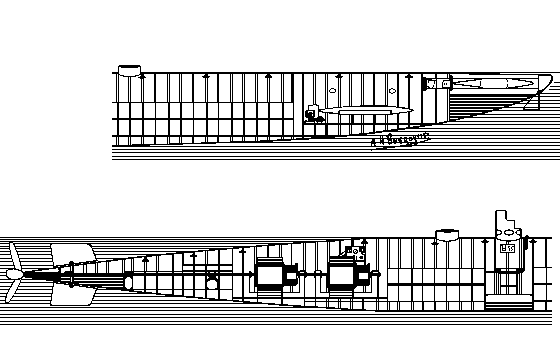

| Length | 159 feet 0 inches |
| Beam | 12 feet 4 inches |
| Displacement | 266 tons |
The Gustave Zédé as launched on June 1, 1893. The hull is cylindrical, but unlike most submarines of this era, not symmetrical fore and aft. There were 76 frames connected by longitudinal braces covered by plates of Roma metal to avoid corrosion. The superstructure ran from the bow to within 50 of the stern. There were two entrance hatches and a conning tower in this deck. The water is removed from the ballast tanks by compressed air provided by Thirion pumps powered by an electric motor.
Propulsion is provided by two electric motors connected to the same shaft. The motors were built by Sautter Harlé and produced 360 HP each. The motors weighed 13.5 tons each and operated at 250 rpm.
The electricity was originally provided by a battery of accumulators by Laurent-Cély. The battery consisted of 720 elements and weighed 130 tons and produced 1800 amperes at 300 volts. The battery began to develop shorts after only a few days of operation and had to be replaced. The new battery exploded when they began to charge it and a fire ensued. As a result the number of cells was reduced by half, and her design speed was reduced from 15 knots to 8 knots. In addition, acid vapors in the air made the crew sick.
On first trip, the Gustave Zédé became unstable as soon as she submerged and yawed 46 to 60 feet. She could not be kept on a straight course for more than a few minutes.
Following the initial trials, the battery was replaced with one of greater capacity. The canvas conning tower was replaced with a metal tower. The Thirion pumps were modified and a new system of diving rudders was installed (2 forward, 2 amidship and 2 aft). These modifications took four years, but the result was improved stability and increased speed.
The conning tower was a little over 1 meter tall and fitted with a periscope approximately 14 inches in diameter. The field of view was 20 degrees above and 7 degrees below the horizon. The image was very distorted and indistinct, rendering it virtually useless.
Armament consisted of three 18 inch Whitehead torpedoes. There was one torpedo tube in the bow.
Source:
Burgoyne, Alan, Submarine Navigation: Past and Present,E. P. Dutton & Co., New York, 1903, pp. 285-290
Ó2001 Gary McCue
Gary W. McCue
gwmccue@ct.metrocast.net
http://www.geocities.com/gwmccue